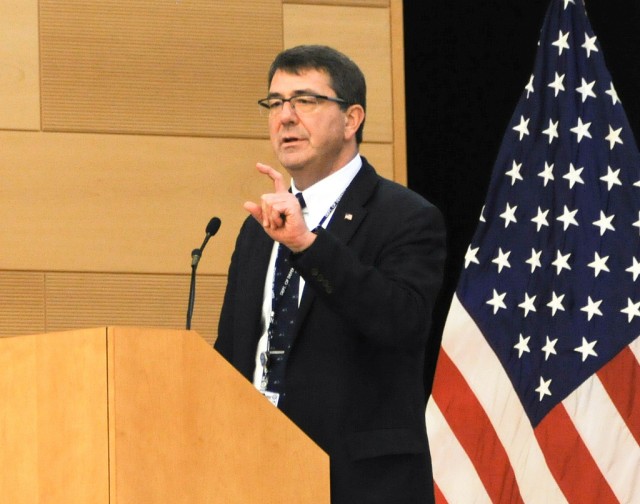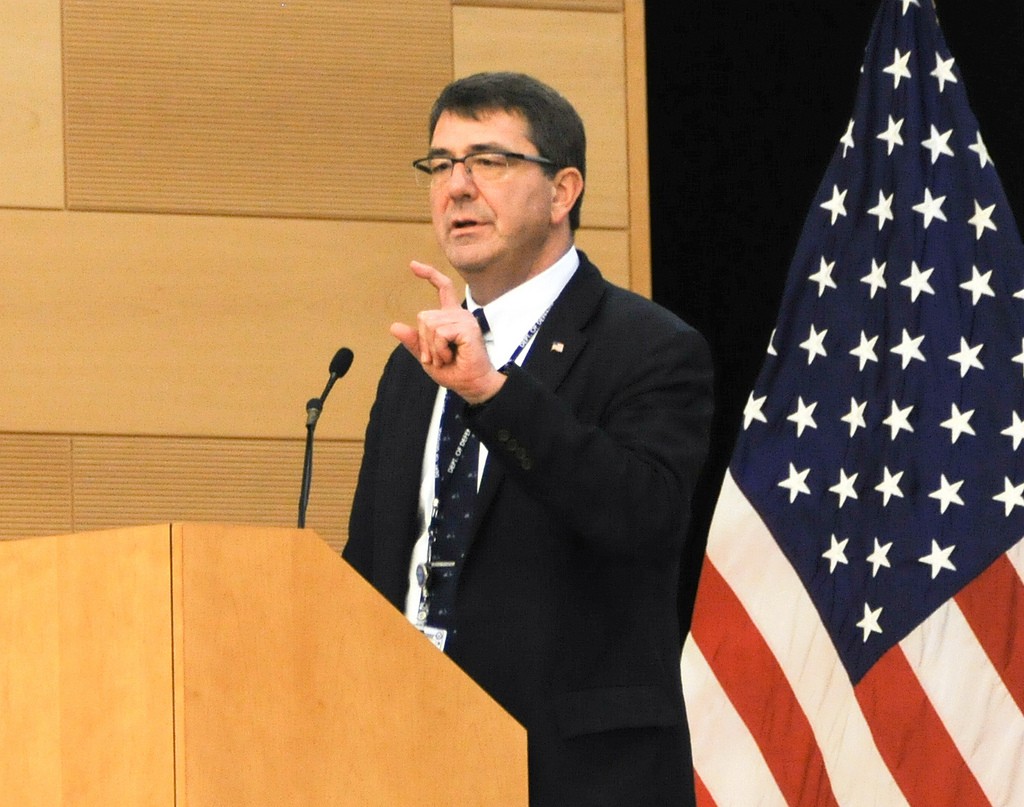ABERDEEN PROVING GROUND, Md. -- A senior Department of Defense official said he is focused on providing greater efficiencies as the military faces budget constraints.
"Delivering better value every year to the taxpayer and Warfighter is what it's all about," said Dr. Ashton Carter, under secretary of defense for acquisition, technology and logistics.
Carter spoke Feb. 17 to about 700 Soldiers and Army civilians at Myer Auditorium.
New era in defense spending:
The military spends $400 billion per year on contracts for goods and services, and it must embrace better ways of doing business or it will lose the confidence of Congress, the president and the American people.
He used the Joint Strike Fighter as an example of cost overruns and inefficiency that are unacceptable.
"The Joint Strike Fighter's unit cost has almost doubled. The sustainment bill for the decades thereafter has tripled. That's ridiculous. I can't go to the Congress every year and say, 'I have the same airplane, but it's going to cost you more.'
"We're not going to get away with it. They're not going to tolerate it. Why should they'"
Carter, however, criticized Congress on its inaction on to appropriate funds for the defense budget.
"We're struggling with the [fiscal year 2011] budget and the continuing resolution," he said. "I urge you to communicate, as Secretary Gates and I are trying to communicate, how debilitating that is, how disruptive that is, how inefficient that is, how it completely runs contrary to everything we are trying to do."
Focus on aligning requirements with budget:
Carter said he and Secretary of Defense Robert Gates have a priority of sticking to what is affordable. They will focus on cutting nonessential capabilities for new programs, including planes, helicopters, submarines and tanks.
The department has to match its requirements with the available funding. He described the Navy's SSNBX nuclear missile submarine as a success.
The design for each new submarine was estimated at $7 billion; however, the program is on track to cut the estimated cost for the designs by 35 percent.
"We're getting down to the point where the programs we have are things we want and need for national security," he said. "We have to get them for the amount of money we're going to have. That's not going to be an ever-increasing amount of money every year."
Producing faster capabilities:
The military must also reduce the time it takes to field new equipment and technology to theater, Carter said. Current procedures do not match the speed of today's warfare.
"Every time we set up a program and say it's going to take us 10 years to deliver something because of our processes, you're taking something that could be done economically in three of four [years], and stretching it to 10," he said. "Time is the silent killer in our business.
"We're trying right now to get things into Afghanistan this spring and summer so they can make a difference in this war. I don't know how many months we're going to get to be there and get the result. Every month counts.
"We have a system that does not turn inside the loop of our enemy."


Social Sharing